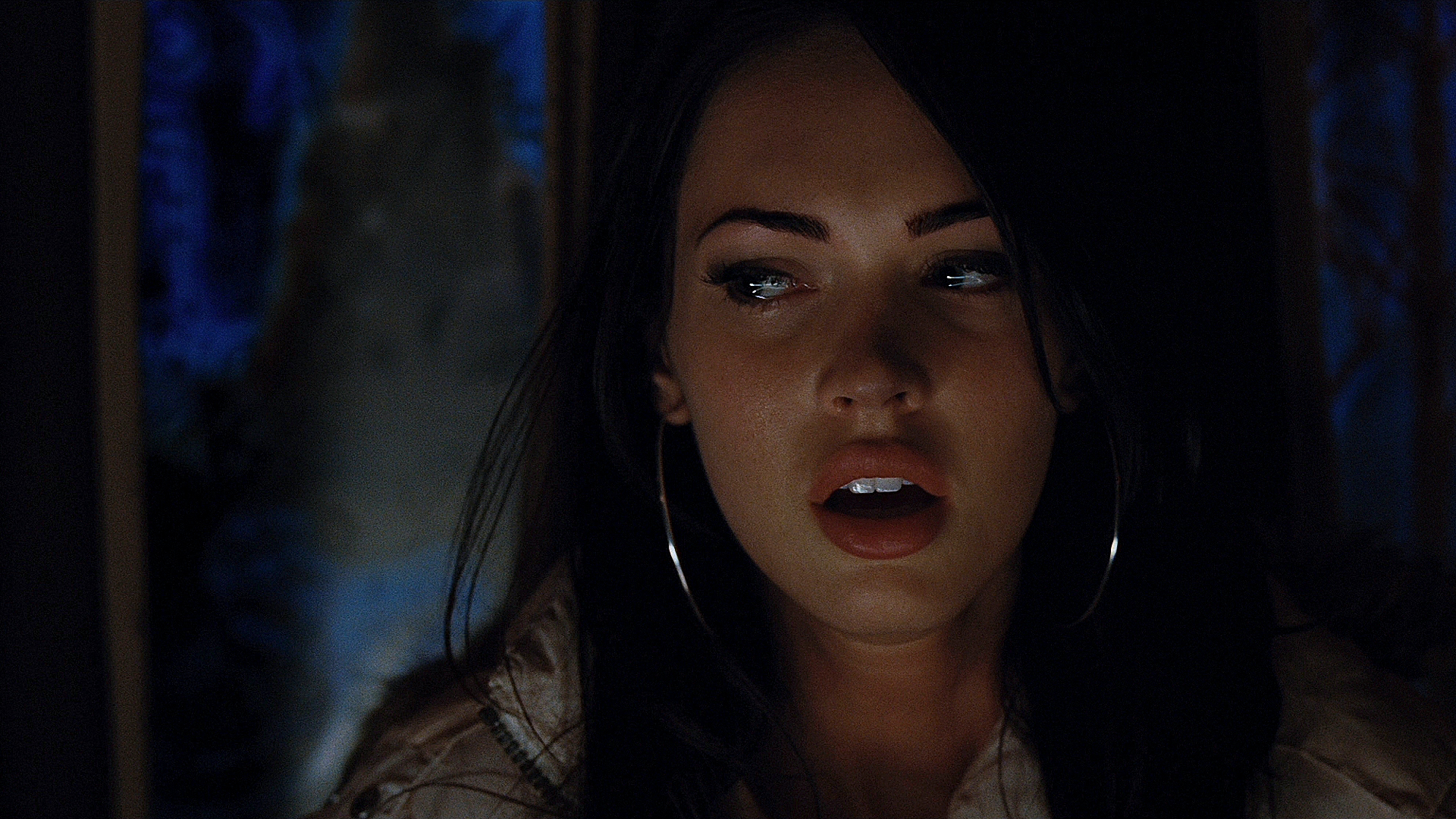Table of Contents Show
A campy, feminist, fright flick with an elevated horror approach might sound like a sensation today, but in 2009 this story may have been ahead of its time. After screenwriter Diablo Cody’s first feature film, Juno won her an Oscar in 2007; she says she was pretty much given the freedom to write whatever she wanted (( ET Live. “Jennifer’s Body Reunion: Megan Fox and Diablo Cody Get Candid About Hollywood (Exclusive).” Youtube, 19 September 2019. )). Considering that no one was policing Cody’s script, she was able to tell a story that went against the grain. In effect, the horror-comedy Jennifer’s Body was born. This new screenplay would showcase itself through the female gaze and would not conform to the typical horror film archetypes.
Unfortunately, at the time of the film’s release, it received overwhelmingly negative feedback. This was a result of many disadvantageous factors that seemed to hit the film from all angles. Namely, inadequate marketing and themes that, while relevant at the time, society wasn’t ready to acknowledge. Moreover, writer Cody and lead Megan Fox would, ironically, face the same scrutiny in real-time that their film was trying to combat. Critics and consumers both shared their opinions, claiming Cody was a one-hit-wonder and Fox was “best qualified to wash a car in a bikini in the Transformers movies” (( Vox. “How Jennifer’s Body went from a flop in 2009 to a feminist cult classic today.” Vox.com, 31 October 2018. )). Both of these observations couldn’t be further from the truth, but with the film being viewed through the lens of the male gaze, many couldn’t see that. In conclusion, Jennifer’s Body didn’t flop because it was a bad film; it was just misinterpreted. And since then, the film has deservedly found recognition among its intended audience.
A Marketing Nightmare
To this day, if someone were to look up a synopsis or summary of Jennifer’s Body, they would find something along the lines of ‘Hot cheerleader gets possessed and starts killing boys.’ While this is not wrong, it is worth noting that there is only one scene where Jennifer Check is in a cheerleading uniform, and other than that, her choice of sport isn’t further mentioned. Diablo Cody had a clear vision for what Jennifer’s Body was going to be when she started writing it. She says in an interview that,
“I wrote the script and that was, if I recall correctly, a very free-flowing and exciting and easy process, and I think I knew how bizarre it was; like right off the bat I was like, this isn’t a super commercial movie.”
ET Live. “Jennifer’s Body Reunion: Megan Fox and Diablo Cody Get Candid About Hollywood (Exclusive).” Youtube, 19 September 2019.
The screenplay Cody wrote was about much more than some hot cheerleader, and if you went into this film expecting classic horror archetypes, you would be greatly disappointed.

Essentially, this is what happened – Cody wrote a story that was intended for a young feminist audience (( ET Live. “Jennifer’s Body Reunion: Megan Fox and Diablo Cody Get Candid About Hollywood (Exclusive).” Youtube, 19 September 2019. )). Though to the film’s detriment, the studio thought with Megan Fox playing, lead role, Jennifer Check that “Frat Boys” (( ET Live. “Jennifer’s Body Reunion: Megan Fox and Diablo Cody Get Candid About Hollywood (Exclusive).” Youtube, 19 September 2019. )) would be a stronger demographic to target. It’s very clear that the studio only valued this film for one reason. In regards to a marketing executive, Cody says,
“I had sent him this articulate defense of the film and here’s how it should be marketed and I said ‘what specifically are you thinking?’ and he wrote back, ‘Megan Fox hot.’… That was in terms of, what is the value of this film… So that should give you an idea of where they were going with [marketing].”
ET Live. “Jennifer’s Body Reunion: Megan Fox and Diablo Cody Get Candid About Hollywood (Exclusive).” Youtube, 19 September 2019.
This resulted in the screen test groups being consisting of younger college-aged boys, which garnered negative responses. While most would agree the logical next step against this forced audience’s unexcited feedback would be to try marketing the film to Cody’s intended audience, the studio’s marketing plans were clearly flawed. Unsurprisingly, they looked at comments like “Needs more Bewbs.”(( ET Live. “Jennifer’s Body Reunion: Megan Fox and Diablo Cody Get Candid About Hollywood (Exclusive).” Youtube, 19 September 2019. )) and thought they should lean further into sex appeal and less into the film’s actual narrative.
Sexploitation: Jennifer’s Body Through The Studio’s Lense
Ultimately, Jennifer’s Body was marketed as a sexploitation film. Frank Henenlotter, a director and exploitation film historian describes this genre to The New York Times as, “[Films that were] made by businessmen, not artists… The point was if you have a camera and you can get some naked girls in front of the camera, you would make some dollars” (( The New York Times. “Sexploitation Films, Short on Good Taste, Still Have Devotees.” Nytimes.com, 2 June 2016. )). As previously established, this could not have been further from the truth regarding the film’s subject matter. Marketing the film in this manner was incredibly problematic as the studio was “basing its campaign on catering to the same male gaze that the movie was challenging” (( The Take. “Jennifer’s Body and the Horrific Female Gaze.” Youtube, 27 July 2021. )). In consequence, came the hypersexualized film posters of Fox.

The posters alone were enough to have audiences questioning whether Jennifer’s Body was a horror film to be taken seriously. Though executives didn’t stop there, at one point suggesting “Fox host an amateur porn site to promote the film” (( Buzzfeed News. “You Probably Owe ‘Jennifer’s Body’ An Apology.” Buzzfeednews.com, 7 December 2018. )). When this deplorable suggestion never came to materialize itself, the notorious trailer surfaced instead. The studio used marketing tools like the trailer and Panic! At The Disco’s “New Perspective” music video as vehicles to publicize their intended narrative. The new approach would rely heavily on highlighting the kissing scene between female leads Jennifer Check and Anita ‘Needy’ Lesnicky (played by Amanda Seyfried). Intended to be “something profound and meaningful”(( Screen Rant. “20 Crazy Details Behind The Making of Jennifer’s Body.” Screenrant.com, 30 October 2018. )) Cody says, “There [was] a [physical] energy between the girls which is kind of authentic, because I know when I was a teenaged girl, the friendships that I had with other girls were almost romantic, they were so intense.”(( Screen Rant. “20 Crazy Details Behind The Making of Jennifer’s Body.” Screenrant.com, 30 October 2018. )). Unfortunately, like most aspects of the film, it was misinterpreted and seen solely as a publicity stunt.
The choice to omit the female filmmaker’s ideas and intentions for the film not only hurt its chances of being successful but amplified why a film like this was important to be making. Director, Karyn Kusama explains her frustrations with the marketing team saying “either we made a movie that they see completely differently, or what’s in front of them is something they don’t want to see,”(( Buzzfeed News. “You Probably Owe ‘Jennifer’s Body’ An Apology.” Buzzfeednews.com, 7 December 2018. )). The predominantly male-run film industry took a story about female empowerment, friendships, and revenge and tried to turn it into the sex fantasy that they saw when they looked at Megan Fox. Accordingly, the film itself “playfully denies the male gaze”(( The Take. “Jennifer’s Body and the Horrific Female Gaze.” Youtube, 27 July 2021. )) and demands its audience to see more from Jennifer’s character. Overall, The sexploitation take on marketing Jennifer’s Body simultaneously set its young male viewers up for disappointment while driving its intended female audience away.
Elevated Horror
Jennifer’s Body was released with the title ‘horror-comedy’ and the marketing of a sexploitation film but would be better suited by the genre, elevated horror. This subgenre rose to popularity with films like It Follows (2014) and Get Out (2017) in the 2010s, only years after Jennifer’s Body was released(( The Take. “Jennifer’s Body and the Horrific Female Gaze.” Youtube, 27 July 2021. )). Elevated horror is known for “backing away from gimmicks and instead investing in visionary talent… but beyond any shifts in how these films are made, perhaps the most encouraging trend in [elevated] horror for the past decade has been the regard it has begun to receive as a vehicle for meaningful storytelling.”(( Vanity Fair. “This was the Decade Horror Got ‘Elevated’.” Vanityfair.com, 17, December 2019. )). Get Out showcases the horrors of racism and It Follows tackles the “the horrifying aftermath of sexual assault”(( Bloody Disgusting. “‘It Follows’ is Not About STDs. It’s About Life As a Sexual Assult Survivor.” Bloody-Disgusting.com, 27 April 2016. )). Similarly, Jennifer’s Body is a horror film that addresses sexism and the patriarchy’s effect on the relationships between girls.

Another elevated horror film that has made a name for itself within the genre and the homes of many non-horror fans alike is Midsommar (2019). While the idea for Midsommar would classify the film as elevated horror on its own, Director Ari Aster adds an element that truly hits home. This element can take some fans multiple watch-throughs to grasp was that the film itself indoctrinates you alongside its main character into the Hårga cult. This forces the viewer to put themselves in the position of the character, and understand how easily indoctrination can happen; the realization itself being the most chilling detail. Likewise, Jennifer’s Body utilizes sexually suggestive scenes of Fox to oppose the expectation and deny the viewer of any action. Forcing a viewer who may anticipate seeing Fox naked to look inward when she reappears, clothed at why nudity is expected. Jennifer’s Body also discusses the reclaiming of sexuality which has been used in the past to punish women in the horror genre; for instance, the sex equals death trope.

While providing some jump scares and gory depictions of dead boys, Jennifer’s Body gets its more frightening tones from the psychological scares it provides. Therefore with the title horror-comedy and the early 2000’s ‘IT girl’ Megan Fox starring studio executives didn’t take the psychological horror angle into account. Ultimately they looked at the framework of Jennifer’s body through the male gaze and marketed it as such. In effect, completely disgracing the women who worked on this film.
The Female Gaze
To talk about the female gaze that audience members are so rarely confronted with, we must talk about its rival, the male gaze. The male gaze, which you are familiar with even if you’re unaware, is described as “a way of seeing women and the world through a masculine perspective and point of view. The psychology of the male gaze is comparable to the Freudian concept of scopophilia, which is defined as the pleasure of looking” (( In Their Own Leauge. “Feminist Film Theory 101: Defining The Male Gaze.” Intheirownleauge.com, 29 September 2019. )). This means that women are displayed as objects through the male gaze, something to look at rather than paying attention to on a deeper level, thus impacting the film industry and society as a whole.
On-screen the male gaze has long dominated camera conventions for how cinema frames women, while off-screen women look at and judge [themselves] against these images.
The Take. “The Female Gaze – Yes, It Can Exist.” Youtube, 12 June 2021.
If you’re wondering just how impactful the male gaze is, look in almost any direction. Not only is the film industry male-dominated, increasing the number of stories told through the male gaze, but the profession of film critics is male-dominated as well. Therefore even when we get a story told through the female gaze, it has a predisposed disadvantage as critics are less likely to resonate with its themes, jokes, and even costume decisions. This increases the likelihood that films presented through the male gaze will get better ratings and, in turn pushed to the masses. Due to the male gaze being ingrained, it is damaging to women thus making the female gaze much more needed.
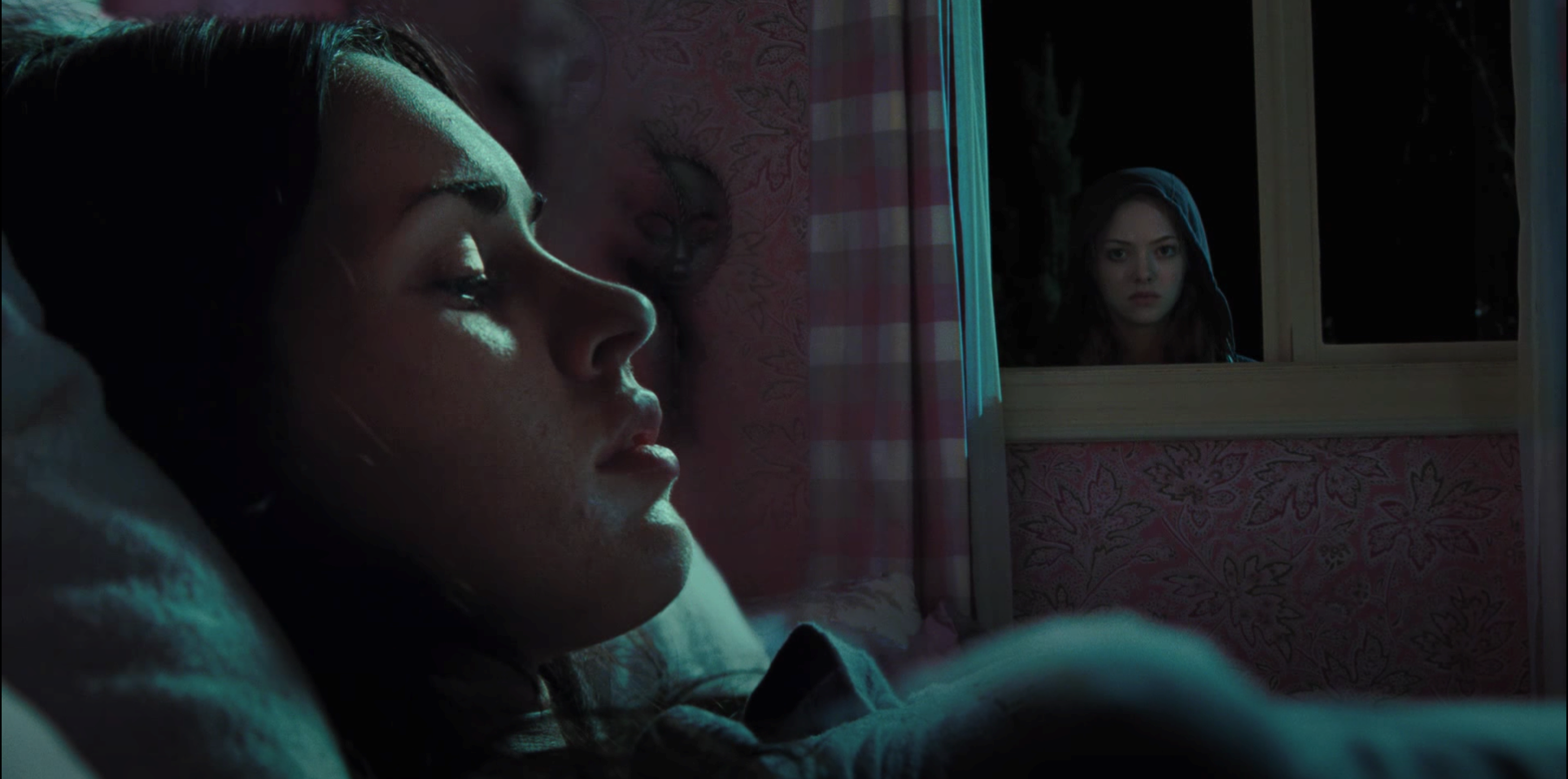
However, what is the female gaze? Is it simply the opposition to the male gaze? Filmmaker and creator of Transparent (2014-2019), Joey Soloway answers the question, saying, “If it were the opposite of the male gaze, if taken literally, it would mean… visual arts and literature depicting men from a feminine point of view, presenting men as objects of female pleasure…” (( Tiff Talks. “Jill Soloway on The Female Gaze | MASTER CLASS | TIFF 2016.” Youtube, 11 September 2016. )). This approach has been done, but it’s not actually the female gaze. Soloway jokes that they don’t care to see hairy men sprawled out in a catalog or Sigourney Weaver with a gun because on a base level, these are still just ideas of what men think women want to see not what women are actually interested in. Essentially, it’s still the male gaze.
Jennifer’s Body Through A Woman’s Lens
Jennifer’s Body is quite literally told through the lens of a woman as the writer, director, and two main characters are women. The film truly delivers on having a core feminist perspective with the narrative. Jennifer is preyed on and sacrificed by the band ‘Low Shoulder’ because they believe she is a virgin. Though in the film, Jennifer discloses she is not, resulting in the ritual backfiring and Jennifer being turned into a succubus. In other words, a female demon that seduces men and now eats them too, and this possession would continue as a metaphor for “both her death and her becoming”(( Anatomy Of A Scream. “[GUEST] Patriarchy, Possession, and Power in Jennifer’s Body (2009).” Anatomyofascream.com, 15 January 2019. )) throughout the film. The reason all of this is important is that it smashes the long-time film trope that to survive a horror film, especially if you’re a woman or girl, you have to be some ‘pure’ caricature of a woman (male gaze at its finest). Therefore Jennifer inadvertently did not die by becoming the demon, and the sex equals death narrative is turned on its head. We also have a sex scene for Needy’s character. She ends up being a version of the ‘final girl’ trope, usually depicting a survivor based on innocence rather than intelligence or strength.
While challenging classic male implemented horror tropes like sex equals death, as the title of the film suggests, Jennifer’s body, post sacrifice, is not her own. Jennifer seems confident and unbothered when she acknowledges her assault and attempted murder in front of Needy. She also demonstrates an excitement for her newfound ‘super powers.’ Though when the viewer gets a scene of Jennifer alone, she seems different. In the scene where Jennifer is getting ready for the dance, staring at herself in the mirror, she exhaustedly smears makeup across her face as she holds back tears. Fox’s powerful acting required no words for the message to be clear. Something was stolen from Jennifer the night of her death/ resurrection. In this case, her life, as she must now continue on as a demon to survive.
Though this plot device is a representation of a loss not so specific to Jennifer but women everywhere, Jennifer’s sacrificial suffering is indicative of assault and its lingering effects on women in real life. Jennifer may act like killing boys is fun, and she enjoys the boost of beauty and vitality it seems to give her, but in reality, her sense of normalcy is lost. She is suffering, and she yearns for her life before the assault and sequential trauma. The film also uses Jennifer’s new diet to highlight the ignorance that the male gaze displays. As Jennifer “is easily able to coax men into dangerous, secluded areas…[the film] seems to make fun of men who only value women for their body’s to a degree that they’ll blindly throw themselves into suspicious or even dangerous situations to sleep with them.” (( The Take. “Jennifer’s Body and the Horrific Female Gaze.” Youtube, 27 July 2021. )).

The women are in control in every facet of the film. In the typical horror film, Jennifer’s death would’ve been another disposable plot device but instead, we spend the rest of the film resonating with her and her experience post-sacrifice (( The Take. “Jennifer’s Body and the Horrific Female Gaze.” Youtube, 27 July 2021. )). While Jennifer resembles the ‘promiscuous girl’ trope she is never slut shammed and is instead beloved. The female friendship between Needy and Jennifer seems to take precedence over virtually everything else in their lives, thus taking the attention off male characters. Chip, the film’s resident ‘nice guy’ doesn’t listen to Needy’s concerns about Jennifer. It eventually leads to his demise, most likely poking fun at the male gaze again by eluding to how the patriarchal notion that men are smarter than women is ludicrous. Even though Chip’s intentions are pure, he’s blind to his own sexist bias, so he has to die.
Chip’s death has another layer to their friendship, though it’s a pretty terrible move to try and murder your best friend’s (Needy) boyfriend. Teenage female friendships are one of the main themes in Jennifer’s Body, down to the nitty-gritty. As aforementioned, the male gaze creates standards for women to judge themselves; it incites competitive behavior. Cody really thoughtfully depicted these young female relationships where your best friend can also pose to be your greatest competition, and maybe stab you in the back. Jennifer’s character genuinely wants to see Needy prevail, just as long as she’s a few steps behind her. Jennifer turned demon, essentially, has nothing left besides Needy. Though Needy still has Chip, Jennifer feels the need to knock her down a peg, making herself feel better — as well as the need to eliminate the competition for Needy’s attention.
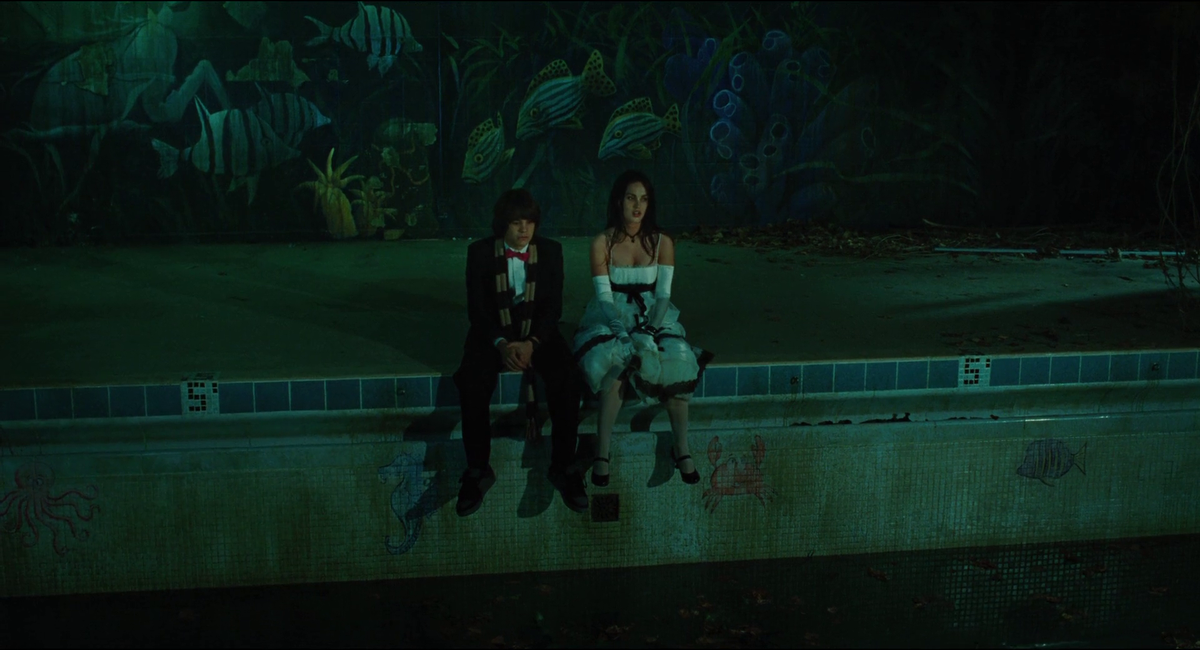
The relationship between Needy and Jennifer is confusing, as many adolescent female friendships can be. Their extremely co-dependent relationship “speaks to women and their relationships with other women in a way that men do not understand; it unabashedly shows the way female friendships so often have intimate overtones. Cody has also confirmed multiple times that there was intended sexual tension written between Jennifer and Needy” (( Movie Jawn. “Totally Lesbi-Gay: Let Diablo Cody Reclaim Jennifer’s Body” Moviejawn.com, 27 January 2020. )). In effect, it would be valid to assume that the kiss they share in the film isn’t their first interaction of that nature; instead of representing a “universal queer experience of what it’s like to be in love with a best friend, enduring the torture of it as well as all its euphoria” (( Movie Jawn. “Totally Lesbi-Gay: Let Diablo Cody Reclaim Jennifer’s Body” Moviejawn.com, 27 January 2020. )). Jennifer and Needy’s friendship represents complexities between women and a co-dependency that is potentially toxic while rooted in love. In this case… to the point where the girls are literally stabbing each other in the back, whether that’s killing their boyfriends or quite literally stabbing Jennifer in the heart.
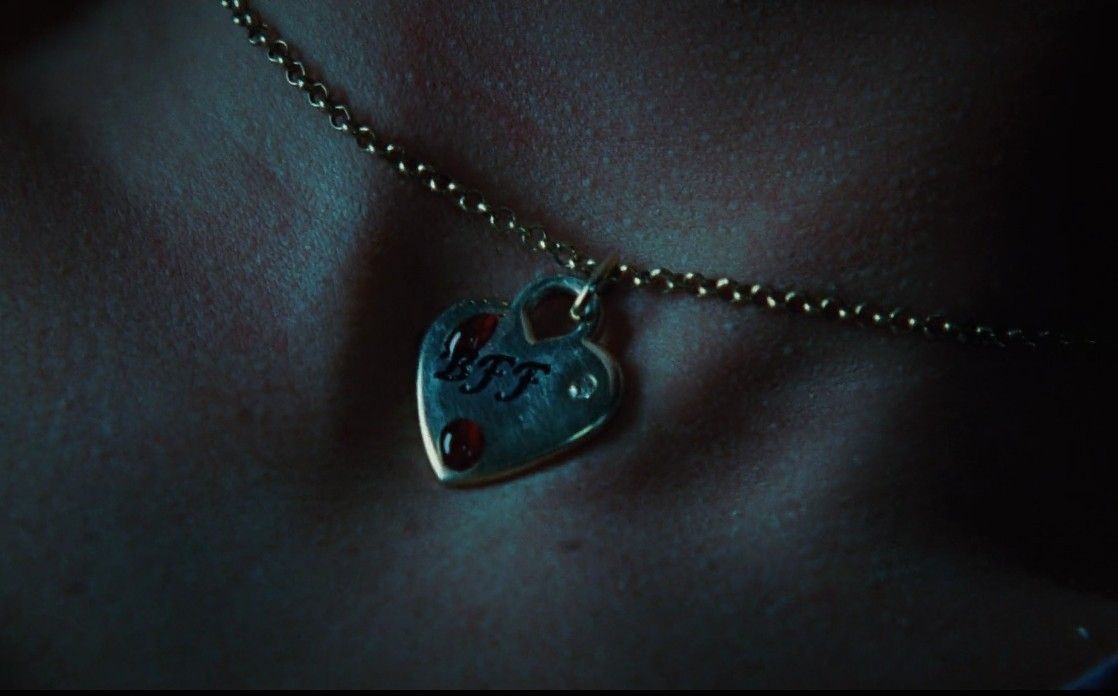
As Needy states in the film, the way to kill a demon is to injure its heart. In the final scene with Needy and Jennifer, she only appears to lose her strength and submit to her demise when Needy rips the ‘BFF’ necklace off This is because Needy, herself, represents Jennifer’s heart in this scene, and once Needy is lost, so is Jennifer’s strength. This also introduces the narrative that Jennifer’s strength has been dependant on Needy the whole time, more so than the succubus’ dependence upon male flesh. While Jennifer turns into the film’s antagonist, audience members can’t forget she is still the victim. Needy understands this as killing Jennifer was undoubtedly the hardest thing she’s ever had to do. Needy doesn’t want to kill Jennifer; she needs to kill the demon that was unwillingly imposed upon her. To finish the film off we are provided the revenge tale of all revenge tales as Needy reminds viewers “Sandbox love never dies”(( Kusama, Karyn, Dir. Jennifer’s Body. 2009. )) and breaks out of the institution she’s in, to avenge Jennifer and Murder the true villains, ‘Low Shoulder.’
Unrated Vs. Theatrical Cut
If you’re going to watch Jennifer’s Body, watch the unrated version or as Cody refers to it, “The director’s cut”(( ET Live. “Jennifer’s Body Reunion: Megan Fox and Diablo Cody Get Candid About Hollywood (Exclusive). )). Like all the rest of the studio’s marketing tactics, this was yet again a failed attempt at enticing men with the ‘unrated’ title. Jennifer’s Body (Unrated) would include no further nudity, foul language, or even kills. The biggest differences had to do with the perspective in which the story was told. The unrated version emphasizes the perspective of Needy’s character, while the theatrical version does the opposite. There are also scenes where Jennifer’s character is edited to look ‘better’ in the theatrical version. Specifically, the opening scene in which it is assumed that the studio didn’t want the audience’s first look at Jennifer to be anything less than perfect(( Dead Meat. “Jennifer’s Body(2009) CUT COMPARISON.” Youtube, 9 May 2021. )).
The unrated version has an added five minutes of screen time, boasting two entirely new scenes, and “editing [that] is a bit more considered and purposeful” (( Dead Meat. “Jennifer’s Body(2009) CUT COMPARISON.” Youtube, 9 May 2021. )). For example, after high school football star Jonas, is murdered his father yells out, “I’ll cut off your nutsack and nail it to my door, like one of those lying doorknockers rich folks got, that will be your balls!” (( Kusama, Karyn, Dir. Jennifer’s Body. 2009. )). At first glance, this may look like another funny line that got cut, but it was also A telling assumption that the murder suspect was presumed to be male.
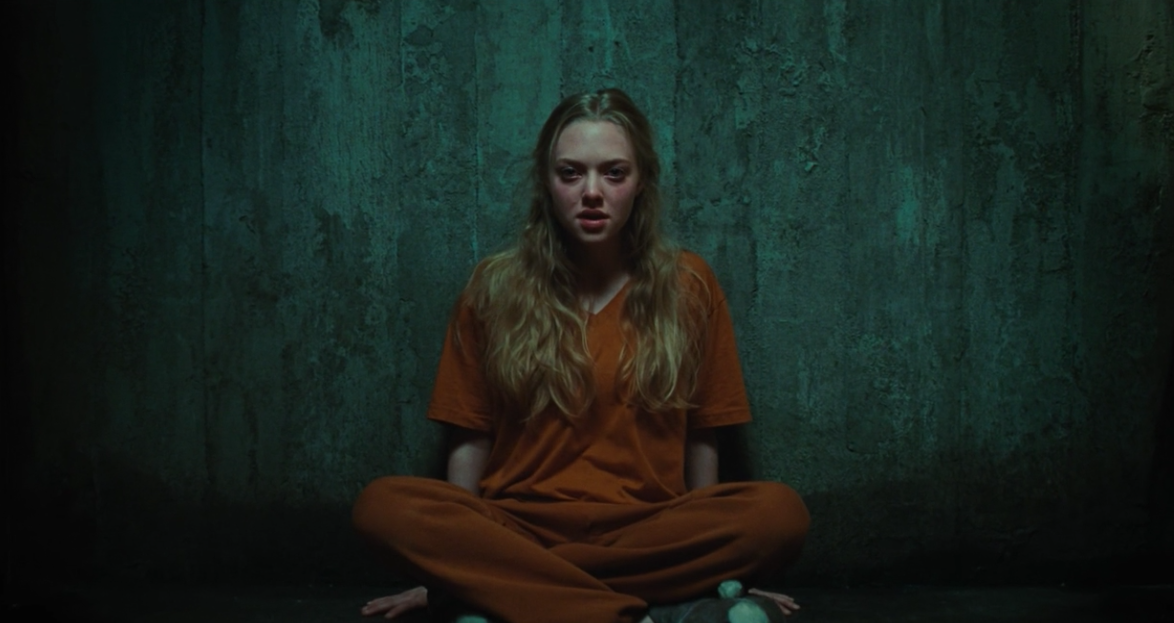
All of these small changes help to flesh out the story and further the narrative of the female gaze. Unfortunately, the studio didn’t care about that narrative, and viewers received the theatrical version at the time of the film’s release. Though now that audience members have the option, it only serves to enhance the viewer experience to opt for the unrated version.
From Misfire To Cult Classic
Another thing to add, other than the film’s big plot points, Cody also delivers some memorable feminist dialogue such as, “PMS isn’t real Needy, it was invented by the boy-run media to make us seem like we’re crazy.” (( Kusama, Karyn, Dir. Jennifer’s Body. 2009. )). As well as Jennifer’s opposition to Roman’s observation of ‘Low Shoulder,’ “cause they’re wearing eyeliner. They look like a bunch of faygos.” (( Kusama, Karyn, Dir. Jennifer’s Body. 2009. ))representing the male gaze. Jennifer responds with the female gaze, “Well, you would think that, Roman because you’re a small-time Gomer. I wish we had more guys like that in Devil’s Kettle. All stylish and shit.”(( Kusama, Karyn, Dir. Jennifer’s Body. 2009. ))
Jennifer’s Body was misrepresented and set up for failure before it even had a chance in 2009. Through terrible marketing, a misogynistic studio vision, and unfortunate timing, the film has battled it all. Furthermore, over the years, the film has fought for a place in the hearts of fans, similar to how the female perspective has had to fight to be presented in the media. Thankfully, the film has since found its intended audience in young feminists and deservedly found recognition amongst critics as well. Vice claiming, “Jennifer’s Body Would Kill If It Came Out Today” (( Vice. “‘Jennifer’s Body’ Would Kill If It Came Out Today.” Vice.com, 23 October 2018. )). Jennifer’s Body didn’t flop because it was a bad film; it was just misinterpreted. So, if you haven’t revisited the film since its release in 2009, give it another chance. Just remember to watch the unrated version, and if you’re a male viewer, be mindful of the female gaze.
